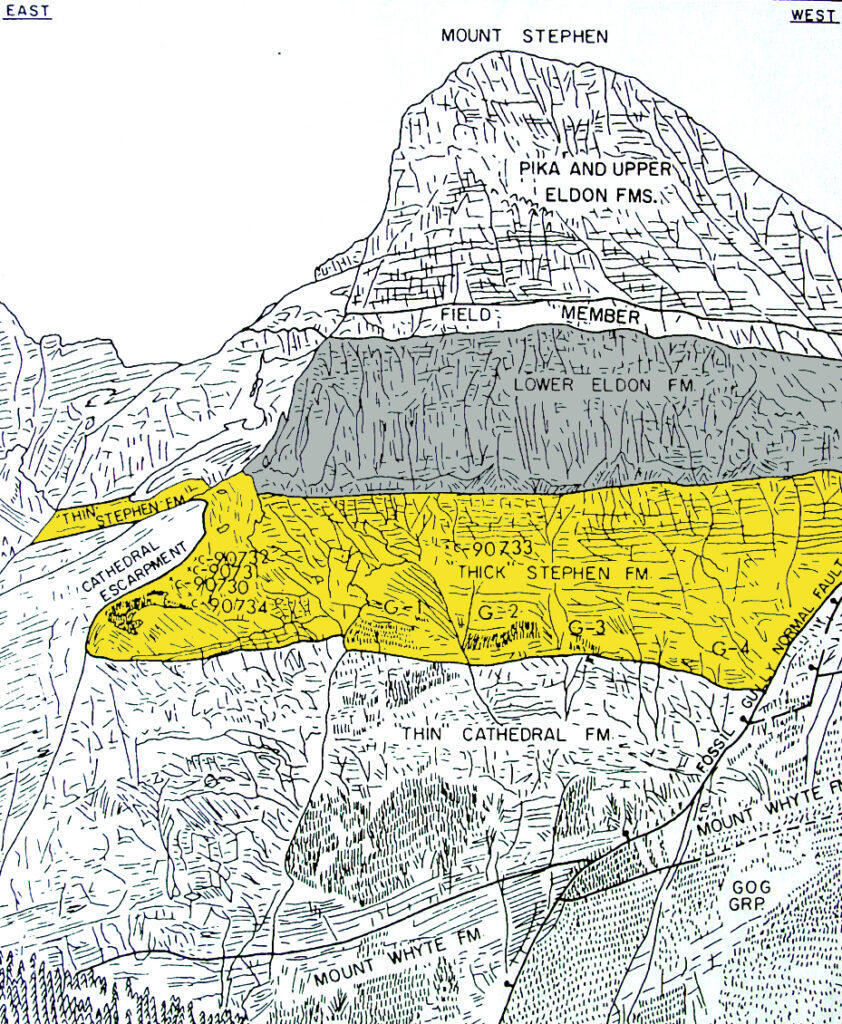The picture above features fossil ridge, situated behind and to the right of the hikers; as well as, Mt Wapta, situated behind and slightly to the left of the hikers. The former is where the Walcott Quarry is located. Below we describe why fossil ridge and Mount Wapta have mudstone (shale) rocks lower down on the mountain and carbonates above.

The break between deep and shallow water environments repeatedly re-developed in the same place throughout geological time and this edge of the shallow water rim of the Cambrian North America is referred to as the Kicking Horse Rim.
This Burgess Shale Geology post is revised for web format from “A Geoscience Guide to the Burgess Shale” by Murray Coppold and Wayne Powell, © The Burgess Shale Geoscience Foundation. To purchase this book, please go to: the Yoho National Park Visitors Centre, Alpine Book Peddlers, Amazon.ca, or Amazon.com

